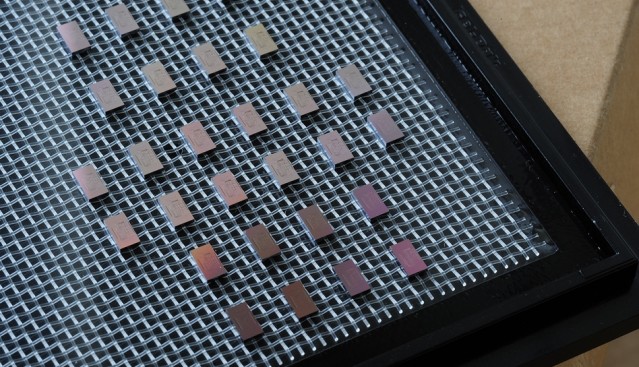Cheap semiconductor spectrometer has high-end performance
December 10, 2018
on
on

Spectrometers are useful bits of kit if you want to investigate the spectra of light sources or the absorption characteristics of a material through which a reference light source is shone. They are most often found in a chemical lab or in an observatory — measuring light from distant stars. A new semiconductor manufacturing technique developed at MIT now promises small, high-performance low-cost spectrometers suitable for a wide range of new applications.
Conventional high-quality lab-grade spectrometers are large devices with correspondingly large, six-figure price tags. Researchers at MIT have however succeeded in fabricating a new type of compact spectrometer that can compete with large-scale devices in terms of accuracy and performance. By using normal semiconductor fabrication processes they can be mass produced at low cost. This will open-up new areas for their application, which up till now were not considered viable due to the cost and size limitations of the spectrometer.
The concept of this new spectrometer is described in the Nature Communications publication. According to the researchers, this new approach to the production of chip-based spectrometers offers significant benefits in terms of performance, size, weight, cost and power consumption compared to current technology. The researchers at MIT are not the first to attempt to build a small, chip-based spectrometer but they are the first to be so successful. With a conventional spectrometer the ability of the device to separate light based on its wavelength is strongly dependant on the physical size of the optical system. Smaller spectrometers with a shorter path length offer poorer spectral resolution.
The new method uses electronic optical switches to guide the beam of light down optical paths of different lengths. Semiconductor switches eliminate the need for moving mirrors and can be easily manufactured using standard fabrication methods. The small semiconductor spectrometer will also be very robust. By making the optical path lengths in increments of powers of two the lengths can be configured in different ways to produce an exponential number of discrete path lengths for the light. This gives a potential spectral resolution that increases with the number of optical switches. The prototype uses six switches giving 64 (26) spectral channels. Scaling up the design to 10 switches would give the spectrometer a resolution of 1,024 channels.
Conventional high-quality lab-grade spectrometers are large devices with correspondingly large, six-figure price tags. Researchers at MIT have however succeeded in fabricating a new type of compact spectrometer that can compete with large-scale devices in terms of accuracy and performance. By using normal semiconductor fabrication processes they can be mass produced at low cost. This will open-up new areas for their application, which up till now were not considered viable due to the cost and size limitations of the spectrometer.
The concept of this new spectrometer is described in the Nature Communications publication. According to the researchers, this new approach to the production of chip-based spectrometers offers significant benefits in terms of performance, size, weight, cost and power consumption compared to current technology. The researchers at MIT are not the first to attempt to build a small, chip-based spectrometer but they are the first to be so successful. With a conventional spectrometer the ability of the device to separate light based on its wavelength is strongly dependant on the physical size of the optical system. Smaller spectrometers with a shorter path length offer poorer spectral resolution.
The new method uses electronic optical switches to guide the beam of light down optical paths of different lengths. Semiconductor switches eliminate the need for moving mirrors and can be easily manufactured using standard fabrication methods. The small semiconductor spectrometer will also be very robust. By making the optical path lengths in increments of powers of two the lengths can be configured in different ways to produce an exponential number of discrete path lengths for the light. This gives a potential spectral resolution that increases with the number of optical switches. The prototype uses six switches giving 64 (26) spectral channels. Scaling up the design to 10 switches would give the spectrometer a resolution of 1,024 channels.
Read full article
Hide full article


Discussion (0 comments)